Sensors and Actors
This is a list of sensors, simple input and output components up to interface chips for various purposes that show the wide range of possibilities supported by the HomeDing library.
Many of the sensors offer simple digital or analog signals to be used by the generalized input and output elements.
Others others are using data transported over a bus like I2C bus or even specific protocols and need special elements.
There is a generalized Sensor Element that is used as a base class for sensors to simplify implementation and support the timing of sensor reading cycles.
Sensors giving digital signals
Many sensors offer direct usable digital signals that can be detected and used as an input to create actions.
Mechanical sensors
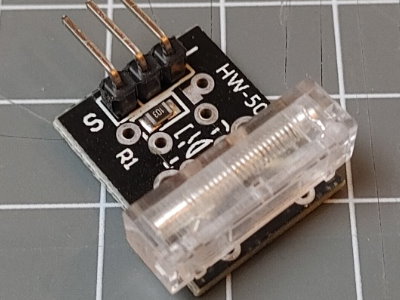
This is a sensor known as knock sensor that creates short-time connections between the 2 pins when shaken or getting massive vibrations.
The DigitalSignal Element can capture these spike impulses and creates a clean actions.
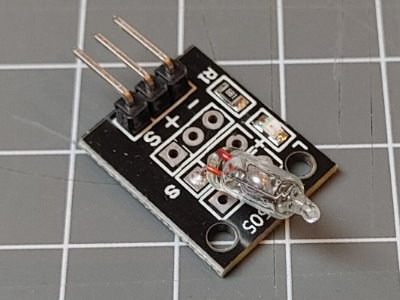
This is a mercury tilt sensor that creates connections between the 2 pins when the position of the switch is upwards.
The DigitalInput Element can create actions based in the input signal.

This is a ball on contacts sensor that creates / breaks connections between the 2 pins when the position of the sensor changes or bumps.
The DigitalSignal Element can capture these signals and spike impulses and creates a clean actions.

This is a shock sensor that creates connections between the 2 pins when a massive force is against the sensor.
The DigitalSignal Element can capture these spike impulses and create a clean action on it.
Magnetic sensors

This is a reed sensor that creates connections between the 2 pins when a high value magnetic field is given.
The DigitalInput Element can create actions based in the input signal.

This is a magnetic hall sensor that creates an analog signal from the detector. The level is compared to a reference signal to also create a digital output signal.
The DigitalInput Element can create actions based in the digital input signal.
The Analog Element can create actions based in the analog input signal.
Light sensors
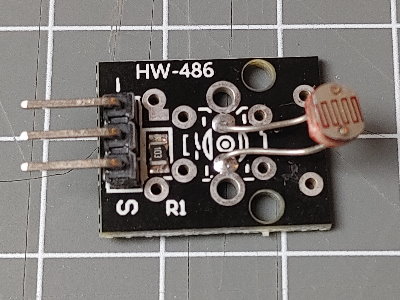
This is a light sensitive sensor using a light defined resistor (LDR) component. This board already has a 10K resistor that creates a variable analog input signal.
The Analog Element can create actions based in the input signal.

This is a light sensor probing for the intensity of light in lumen.
The BH1750 Element enables creating actions based of the values from the sensor.
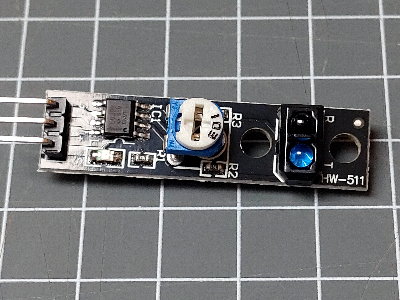
This is a light reflection sensor using a identify reflecting (white) or non-reflecting (black) surfaces. There is a IR transmitting diode and a IR receiving diode producing a digital output signal. The sensitivity can be adjusted.
The DigitalInput Element can create actions based in the digital input signal.
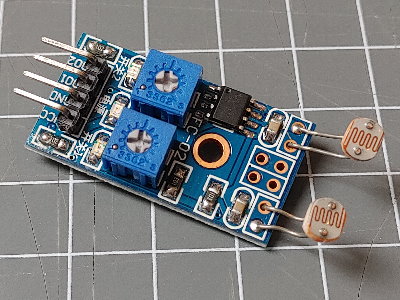
This is a double light sensitive sensor using a light defined resistor (LDR) components. This board has a circuit that compares the analog signal to a adjustable threshold value. The output therefore are 2 digital signals.
The DigitalInput Element can create actions based in the input signals and the logic elements can create combinations of interest.

This is a Light blocking sensor built from a IR LED and a IR photo resistor. It can be used to detect that the light in the gap is blocked. It creates a digital output.
For simple on/off situations the DigitalInput Element can create actions.
When used with high frequencies ans used tp detect rotating speed with a wheel the The DigitalSignal Element can capture these impulses per timeframe to create a clean action with rotation values.
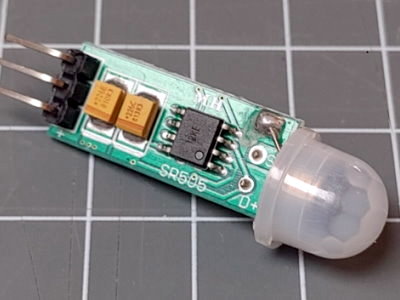
This is a Mini PIR Sensor that creates a digital signal when detecting movements initiated by “warm” objects. It produces a about 10 seconds HIGH level signal.
The DigitalInput Element can create actions based in the input signal.

hcsr501 - This is a PIR Sensor that creates a digital signal when detecting movements initiated by detecting “warm” objects. It produces a HIGH level signal. Signal length and sensitivity can be adjusted.
The DigitalInput Element can create actions based in the input signal.

This is a flame Sensor or IR level Sensor that creates a digital and analog output signal detecting the amount of IR light.
The DigitalInput Element can create actions based in the digital input signal.
The Analog Element can create actions based in the analog input signal.
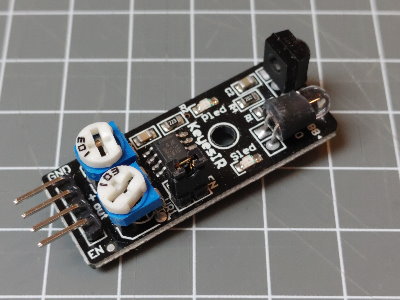
This is a Infrared Obstacle sensor that emits and detects IR light and creates a digital output when there is a reflecting obstacle nearby.
As the signals can be very short the DigitalSignal Element can capture these short impulses and create a clean action on it.
Analog Temperature Sensors
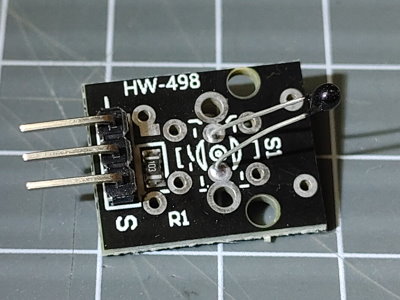
This is a temperature sensor that uses a temperature variable resistor ntc to create an analog output value. There are many form factors for sensors of this kind. The do not have a linear behavior but can be very accurate and can have a wide range.
The Analog output signal can be used to calculate the actual temperature. The Analog Element can create actions based in the analog input signal.
Some sensor boards also contain an adjustable reference the sensor value can be compared to to produce a digital output signal. The DigitalInput Element can create actions based on this digital input signal.
See also environmental sensors below.
Sound sensors

This is a Analog microphone combined with a circuit to compare the amplitude to an adjustable threshold.
The Analog output signal can be used for a recording input and the digital output produces LOW signals when the amplitude gets high enough.
On loud sounds many short signal spikes occur that can be catched by the DigitalSignal Element to create a clean actions on it.
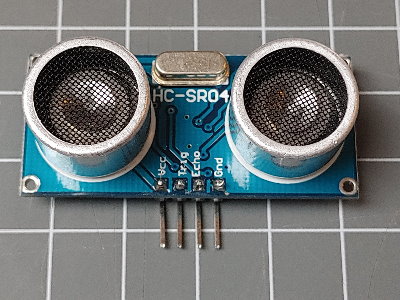
The Ultrasonic range sensor using the hcsr04 board is using Ultrasonic sound impulses that will be reflected by objects and can be used to measure the distance.
This sensor is not yet supported directly by the HomeDing library.
Digital output

The relay can be switched using the Digital Output Element when the board includes a transistor or mosfet to handle the high load demand of a relay.
A relay cannot be used directly with a GPIO pin. There is a example how to control a relay in ESP-01 Board page.
Sensor Elements with impulse/frequency transfers
Instead of providing an analog level some sensors provide impulses with a timing or a impulse patterns.
To communicate with these sensors and actors special libraries and elements are used that implement the specific interface and interpretation of the given data.

These IR sensors (VS1838 / TSOP4838) are equipped with an embedded chip that can detect signals using a 38kHz carrier frequency. When a signal is detected the output is High otherwise low.
IR code detection now has to be implemented by analyzing the input level over time and derive the data from this. There are special libraries available for this. (e.g. https://github.com/crankyoldgit/IRremoteESP8266).
Not yet supported directly by the HomeDing library. Experimental implementation in the DevDing example for RF is available. IR behaves very similar.
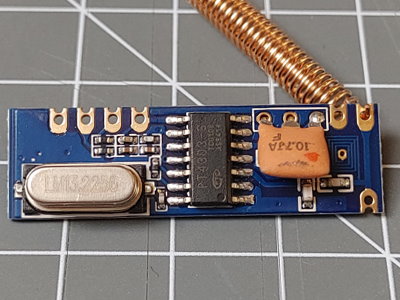
Receiving 433 MHz radio signals to create a digital signal. Not yet fully supported by the HomeDing library. Experimental implementation in the DevDing example for RF 433 is available.
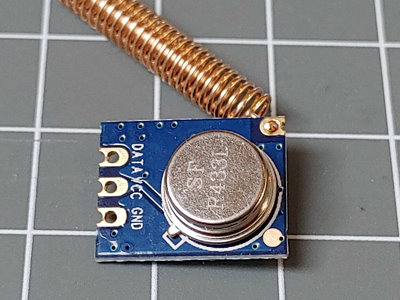
Sending a 433 MHz radio signals from a digital signal. Not yet fully supported by the HomeDing library. Experimental implementation in the DevDing example for RF 433 is available.

The BL0937Element has been implemented to support single phase energy monitoring using BL0937, HLW8012 or HJL-01 chips that are used in some retail plugs and switches.
Sensor Elements with data exchange
These sensor deliver data sets instead of digital or analog values.
They communicate by their specific protocol and actions can be created based on the retrieved values. . Often these sensors provide multiple values or implement more complex I/O needs.
Environment sensing
There are many sensors for temperature and more environment / air parameters varying on interface and parameters:
| Model | Element | Temperature | Humidity | Pressure | VOC | Protocol |
|---|---|---|---|---|---|---|
| AHT20 | AHT20 Element | X | X | - | - | I2C |
| AM2120 | DHT Element | X | X | - | - | DHT |
| AM2302 | DHT Element | X | X | - | - | DHT |
| AM2320 | AM2320 Element | X | X | - | - | I2C, DHT |
| AM2322 | DHT Element | X | X | I2C, DHT | ||
| BMP280 | BMP280 Element | X | - | X | - | I2C |
| BME680 | BME680 Element | X | - | - | - | I2C, SPI |
| Dallas | Dallas Element | X | - | - | - | OneWire |
| DS18B20 | Dallas Element | X | - | - | - | OneWire |
| DHT11 | DHT Element | X | X | - | - | DHT |
| DHT20 | AHT20 Element | X | X | - | - | I2C |
| DHT22 | DHT Element | X | X | - | - | DHT |
| SHT20 | SHT20 Element | X | X | - | - | I2C |
| SHT30 | X | X | - | - | I2C | |
| SHT71 | X | X | - | - | I2C | |
| SHT85 | X | X | - | - | I2C | |
| MICS5524 | - | - | - | X | Analog |

The DHT22 is a air temperature and humidity sensor also known as chip AM2302 that supports a range of -40 to 80°C for temperature with a accuracy of ±0.5% and a full range (0…100%) for humidity.
A very special data transport protocol is used.
The DHT Element creates actions based on the values polled from the chip.
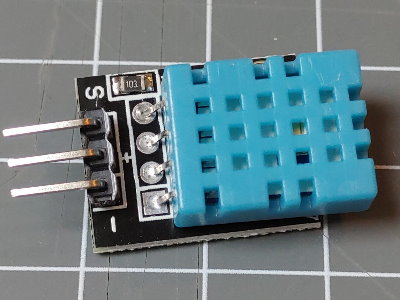
The DHT11 is a air temperature and humidity sensor that supports a range of -20 to 60°C for temperature with a accuracy of ±2% and a limited range (5…95%) for humidity.
A very special data transport protocol is used.
The DHT Element creates actions based on the values polled from the chip.

The AM2320 is a air temperature and humidity sensor with high precision for temperature humidity.
The sensor communicate using the i2c bus.
The AM2320 Element creates actions based on the values polled from the chip.
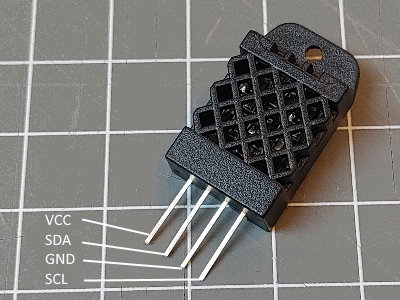
The SHT20 is a air temperature and humidity sensor with high precision for temperature humidity.
The sensor communicate using the i2c bus.
The SHT20 Element creates actions based on the values polled from the chip.
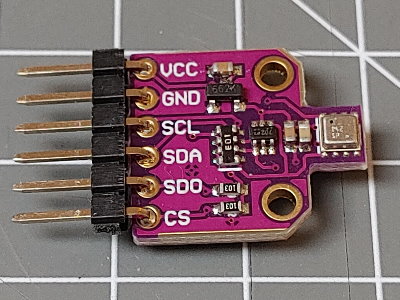
The BME680 is a sensor providing air temperature, humidity, pressure and gas resistance.
The special BME680 Element supports this sensor using the I2C protocol.

The PMS5003 is a laser based air particle sensor measuring air pollution.
The special PMS Element supports this sensor using a serial port.

This Dallas sensor also known as Dallas Temperature sensors measures the surrounding air temperature. There are also sensors with the same chip for measuring liquid temperatures.
A very special OneWire protocol is used for data transmission and multiple sensors can share the same signal bus.
The special Dallas Element supports this sensor.

The BMP280 is a combination of a temperature and absolute barometric pressure sensor.
The BMP280 Element can read the sensor data and uses the temperature to calibrate the air pressure.
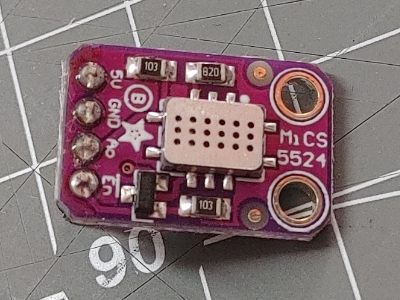
The MICS5524 is a sensor sensible to CO, Alcohol and other VOC Gas. It creates an analog voltage level based on the actual mass of the detected gas. The signal can be taken as an indicator but not as an absolute, correct value without individual calibration of the sensor data.
The Analog Element can be used to gather the sensor value.
Motion

MPU-9250 Nine-Axis (Gyro + Accelerometer + Compass) MEMS MotionTracking™ Device
Measurements
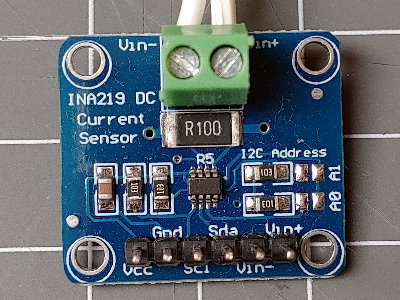
The ina219 chip can measure voltage and current for power consumer in the low voltage and low power range.
This chip is supported by the Probe example in the HomeDing library where you can find the INA219 Element.

The ina226 chip can measure voltage and current for power consumer in the low voltage and low power range.
This chip is supported by the Probe example in the HomeDing library where you can find the INA226 Element.

The Soil Moisture Sensor is one of the sensors that creates an analog voltage level based on the surrounding moisture of the sensor.
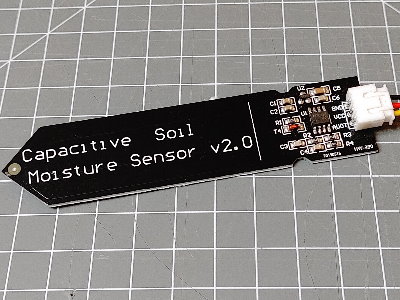
The Capacitive Soil Moisture Sensor is one of the sensors that creates an analog voltage level based on the surrounding moisture of the sensor.
The Analog Element can create actions based in the analog input signal.
The Capacitive Soil Moisture Sensor Recipe shows more details on using such a sensor.
Light control

LEDs that are directly attached to a GPIO port can be driven by the Digital Output Element that supports switching the LED on or off.
The PWM Output Element can dim a LED using PWM signals.
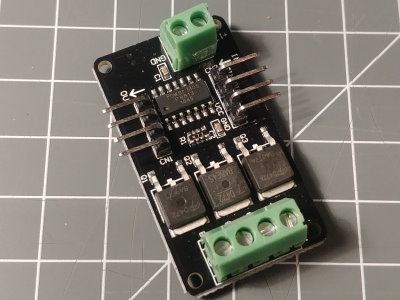
The chip p9813 als known as Groove LED driver is used to control 12V RGB stripes using a special protocol that can control many driver chips n a row.

Neopixel or WS2811 are chips with a RGB led and an embedded driver chip that can directly be controlled by a GPIO pin. Multiple LEDs of this type can be chained on stripes or can build a LED grid.
The Neo Element supports these LED chains for colors and patterns. There is also a special Neopixel board available especially for controlling these LEDs.
Light Element : PWM values for single color or RGB Leds attached directly on GPIO pins.
Input Components

A simple momentary button can be use directly with a DigitalInput Element. to create actions on the button signal.
The Switch Element implements the behavior for using a button to start/stop or on/of a signal.

A switch that can give a binary signal and can be use directly with a DigitalInput Element.

The Rotary Element enables decoding the 2 signals from a rotary encoder.
Radio
There is a very specific example that shows how to use the HomeDing and the Radio library to build a full functional radio that can be controlled by some local input but also from remote.
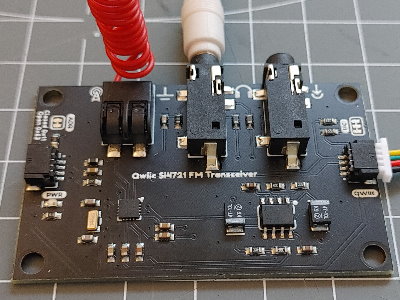
The si4721 is a FM Transceiver that can receive and send FM Audio.
The Radio Element is available as an experimental implementation in the DevDing example using the Arduino Radio library supporting only receiving mode.
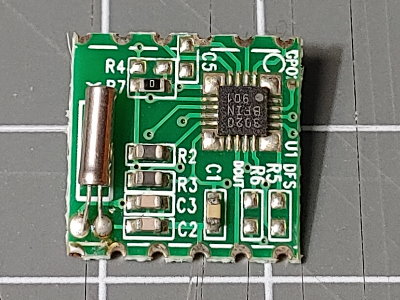
The si4730 is a AM/FM Radio Receiver chip and module.
The Radio Element is available as an experimental implementation in the DevDing example using the Arduino Radio library.